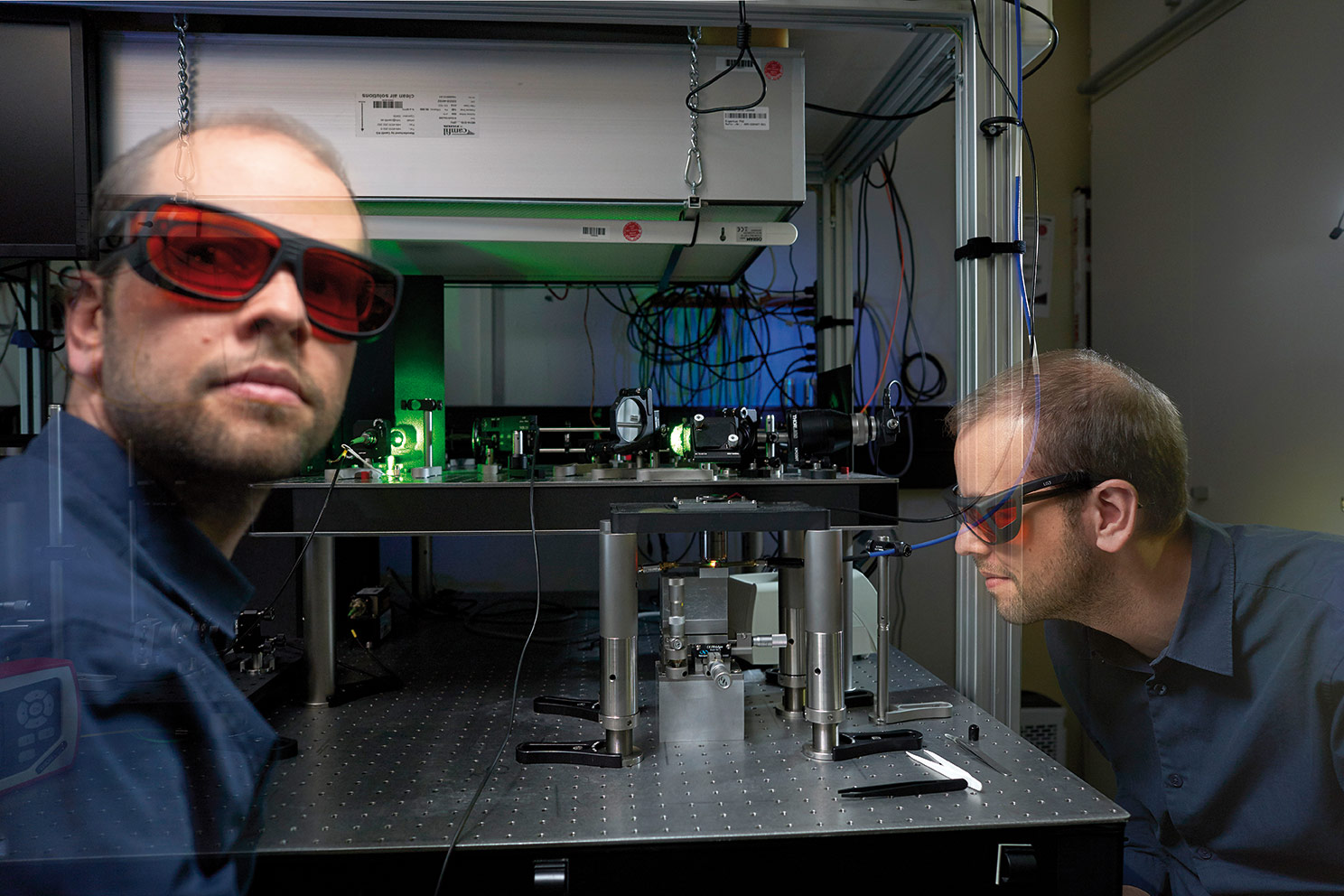Quantum sensors: new opportunities for medical technology

Photons are one, but not the only, way of taking measure of the quantum world. Electrons are another. A research team at Fraunhofer IAF is using these tiny particles to develop ultra-precise quantum sensors.
The principle behind quantum sensors seems simple: Electrons orbit atomic nuclei, and spin like a top. In this context, “spin” is an angular momentum intrinsic to quantum mechanics. This spin produces a magnetic dipole around the electron that other magnetic fields attract or repel. This creates the world’s smallest magnet.
The Fraunhofer Institute for Applied Solid State Physics IAF has chosen to use diamonds for its quantum magnetometer. Explaining the method’s finer points, the institute’s quantum expert Jan Jeske says, “We measure the states of electrons in a very specific defect in the diamond lattice, a so-called nitrogen vacancy (NV) center. This NV center enables us to optically measure the electron spin. A magnetic field shifts the energies of the spin states, which we measure by a change in brightness. This is how the sensor works. Diamond is well suited for this, because it is very stable even at room temperature and allows for long coherence times. To create the NV centers, we first add nitrogen atoms to the diamond, and then generate a neighboring vacancy.”
Improved diagnostics for diseases
Such quantum sensors harbor the potential for enormous progress in medical engineering. For example, they can help diagnose cancer faster and more accurately. The Freiburg research team is looking to improve today’s MRI technology by combining a diamond-based polarizer with biomarker molecules to be injected into the patient prior to an MRI scan. This imaging method could be 10,000 times more sensitive as conventional scans. Quantum sensor technology will also help combat one of the most frequent causes of death, cardiovascular diseases. Given the tools to measure minute magnetic fields in metabolic processes taking place within heart tissue, physicians can better identify risks. The IAF researchers engaged in the MetaboliQs project are developing a diamond-based polarizer which will offer 160 times higher efficiency and 40 times faster polarization at room temperature than before, at just a quarter of the cost.
Quantum sensors are a gateway not only to advances in medical diagnostics; they are also opening new doors for industry and manufacturing. For example, with their ability to detect the tiniest cracks or deformations in materials by their magnetic field signature, these sensors enable manufacturers to test microelectronic and nano-electronic components in a non-destructive manner. The Fraunhofer-Gesellschaft launched the QMAG lighthouse project – a collaborative effort of six Fraunhofer Institutes and two universities – in 2019 to optimize magnetometers for this sort of application.
With concerted research efforts like this underway, we will surely see quantum leaps in many fields over the next 10 to 20 years. This work is giving us a better understanding of matter in all its facets, and the tools to put it to good use. Scientists can now measure, analyze and calculate states and interactions at the atomic level with remarkable accuracy. To measure more is to know more. And to know more is to know better what to do with this knowledge. The future, an adventure in the making, has already begun.